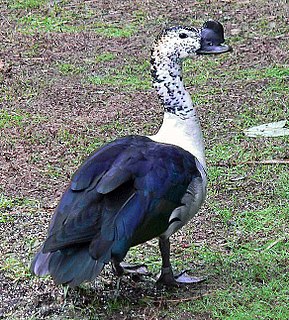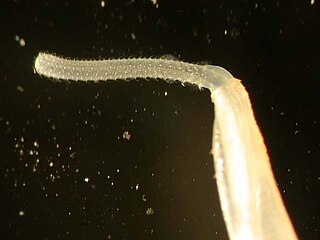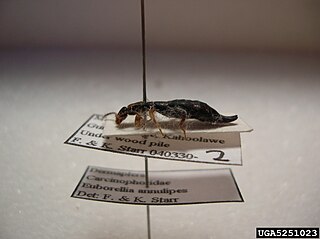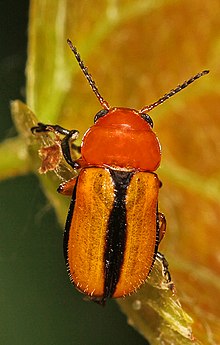
Sarkidiornis is a genus within the family Anatidae. Sarkidiornis is sometimes considered a monotypic genus with its sole member the knob-billed duck, a cosmopolitan species. Most taxonomic authorities, however, split the species into two:

The Pedetidae are a family of mammals from the rodent order. The two living species, the springhares, are distributed throughout much of southern Africa and also around Kenya, Tanzania, and Uganda. Fossils have been found as far north as Turkey. Together with the anomalures, Pedetidae forms the suborder Anomaluromorpha. The fossil genus Parapedetes is also related.
Garrido's hutia is a critically endangered or possibly extinct species of hutia that is found in the Cuban moist forests Global 200 ecoregion.

Palaeacanthocephala is a class within the phylum Acanthocephala. The adults of these parasitic platyzoans feed mainly on fish, aquatic birds and mammals. This order is characterized by the presence of lateral longitudinal lacunar canals and a double-walled proboscis receptacle. The nuclei of the hypodermis are fragmented and the males have two to seven cement glands, unlike their relatives the Archiacanthocephala which always have eight.

Anodonta is a genus of freshwater mussels in the family Unionidae, the river mussels.

Epomophorus is a genus of bat in the family Pteropodidae. They have a distribution throughout Africa.
Tree snail is a common name that is applied to various kinds of tropical air-breathing land snails, pulmonate gastropod mollusks that have shells, and that live in trees, in other words, are exclusively arboreal in habitat.

Anisolabididae is a family of earwigs, in the suborder Forficulina and the order Dermaptera. It is one of nine families in the suborder Forficulina, and contains thirty-eight genera spread across thirteen subfamilies.

Myoleja is a genus of tephritid or fruit flies in the family Tephritidae.

Rhagoletis zephyria is a species of tephritid or fruit fly in the genus Rhagoletis of the family Tephritidae.
Heteracanthocephalidae is a family of parasitic worms from the order Echinorhynchida.

Apodanthera is a genus of plants in the family Cucurbitaceae.
Polycerella is a genus of sea slugs, dorid nudibranchs, shell-less marine gastropod mollusks in the family Polyceridae.

The Hemiphractidae are a family of frogs from South and Central America. Previously, this group had been classified as a subfamily (Hemiphractinae) under family Hylidae. More recent research classifies these genera into their own family, or sometimes into three separate families: Amphignathodontidae, Cryptobatrachidae, and Hemiphractidae (Hemiphractus). An active question still exists as to which of these groupings is more accurate.
The New Ireland forest rat is a large rodent in the family Muridae. It is endemic to New Ireland, in the Bismarck Archipelago, Papua New Guinea.
Lasioglossum serenum, also known as the Lasioglossum (Nesohalictus) serenum, is a species of bee in the genus Lasioglossum, of the family Halictidae.
Lasioglossum alphenum, also known as the Lasioglossum (Sudila) alphenum by Sakagami et al. (1996), is a species of bee in the genus Lasioglossum, of the family Halictidae.
Anthidiellum krombeini is a species of leaf-cutting bee in the genus Anthidiellum, of the family Megachilidae.

Rollulinae is a bird subfamily containing the jungle and wood partridges. They are the most basal member of the family Phasianidae, having diverged during the late Eocene or early Oligocene, about 30-35 million years ago. Many taxonomists formerly placed this subfamily within the Perdicinae, but more recent studies have affirmed its existence, and it is accepted by taxonomic authorities such as the International Ornithological Congress.

Notiosoricini, whose members are known as the North American gray shrews, is a tribe of shrews in the family Soricidae, including the genera Megasorex and Notiosorex. They are found across the southwestern United States and most of Mexico.












